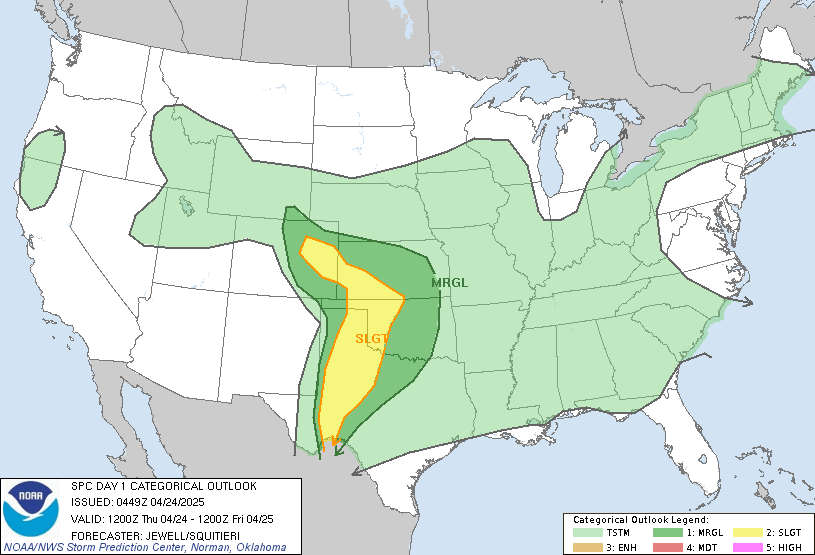40°F
Updated:
1/4/2026
11:02:39pm

SPC - No watches are valid as of Mon Jan 5 02:48:02 UTC 2026
No watches are valid as of Mon Jan 5 02:48:02 UTC 2026.
SPC - No MDs are in effect as of Mon Jan 5 02:48:02 UTC 2026
No Mesoscale Discussions are in effect as of Mon Jan 5 02:48:02 UTC 2026.
SPC Jan 5, 2026 0100 UTC Day 1 Convective Outlook
SPC 0100Z Day 1 Outlook

Day 1 Convective Outlook
NWS Storm Prediction Center Norman OK
0653 PM CST Sun Jan 04 2026
Valid 050100Z - 051200Z
...NO SEVERE THUNDERSTORM AREAS FORECAST...
...SUMMARY...
The risk for thunderstorms will remain generally low across the U.S.
through tonight.
...Discussion...
Cold mid-level air overspreading the Pacific Coast into
Intermountain West, associated with splitting large-scale mid/upper
troughing, has contributed to weak conditional instability, based on
observed and forecast soundings. Thermodynamic profiles appear to
have become at least potentially marginally conducive to convection
capable of producing lightning in a broad swath, across northern and
central California through the northern Intermountain Region and
Great Basin, as well as across the Pacific Northwest.
Despite this destabilization, to this point, weak thunderstorm
development has been generally negligible. With the onset of
diurnal boundary-layer cooling, this may not change appreciably this
evening into the overnight hours.
However, with the mid-level cold core of one notable short wave
perturbation just now beginning to spread inland of Washington and
adjacent Oregon coastal areas, mid-level forcing for ascent and
cooling might still increase sufficiently to support minimum
threshold thunderstorm probabilities tonight.
Across parts of the southern Sierra Nevada into Great Basin, forcing
for ascent associated with a more modest and weakening short wave
perturbation could also still support minimum threshold thunderstorm
probabilities.
..Kerr.. 01/05/2026
Read more
Navigation
